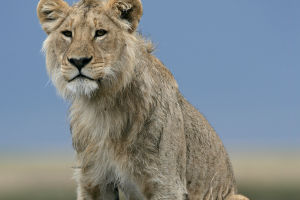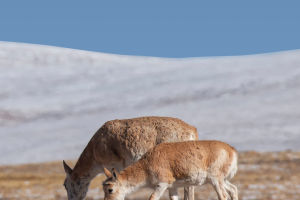The monarch butterfly may be the most famous butterfly in the world, one because it is called the most beautiful butterfly in the world, and the other because it is the only migratory butterfly, flying thousands of kilometers every year to avoid the severe cold in North.
The monarch butterfly is a colorful, large-bodied butterfly that inhabits North America. It has distinct orange and black patterns on its wings, white dots embedded along the wing edges, and its wings can spread up to 8.9 to 10.2 cm. The monarch butterfly is one of the most common butterflies in North America and one of the migratory butterflies on Earth.
We all know how difficult it is for birds to migrate, such as geese. Only the strongest and luckiest birds can complete the migration. But compared to birds, butterflies are extremely fragile.
In order to avoid the severe winter cold in Canada and the United States, hundreds of millions of monarch butterflies risk death every year, going one after another, crossing the violent storms of the Americas and the Pacific Ocean, moving south to Mexico and Cuba and other places for winter reproduction. more than 4000 km.
Their migration is a relay race, and it takes several generations of butterflies to complete a full migration path. The average lifespan of a monarch butterfly is 2-6 weeks, so it takes four to five generations of relays to complete the northward migration.
The most special thing about monarch butterflies is that they will be too cold to move below 45 degrees Fahrenheit, so they must be stacked together and hugged to keep each other warm, so it is often seen that a large number of monarch butterflies are attached to the same tree, as if in a monarch butterfly forest kingdom.
However, with a series of disasters such as global warming, the number of monarch butterflies has dropped by more than 99% compared with the 1980s. In recent years, the number of monarch butterflies in California has hovered around 30,000, which means that This wonder of the world will disappear completely at any moment.
Scientists say the decline in monarch butterfly numbers is due to climate change, habitat loss, and the use of pesticides and herbicides. What can we ordinary people do to help monarch butterflies?
1. Planting milkweed
One of the quickest and best ways to help is to plant milkweed on your land. Milkweed is a plant with a white sap. Monarch butterflies can eat milkweed and lay their eggs there. They need milkweed to survive.
Choosing the right type of milkweed is important, and not all milkweeds are created equal. Monarch butterflies feed on hundreds of different flowers and need nectar from spring to fall.
We can grow several types of pesticide-free native milkweed that bloom at different times to make your garden monarch friendly. Avoid tropical milkweed, which is an invasive species. Avoid treating milkweed with pesticides.
2. Plant nectar-producing plants
Other plants, especially those whose flowers have nectar, are also helpful for adult monarch butterflies. But be sure to choose plants native to your area.
These plants can be an excellent food source for butterflies. Plant late blooming plants together that can help provide the energy monarch butterflies need to migrate.
3. Understand the source of plants
It's also important to know where the plants you buy come from. It is important to ask garden center staff about pest management practices.
Many chemicals can harm the next generation of butterflies. You can prevent monarch butterfly poisoning by purchasing trustworthy organic sources, or you can self-seek plants.


